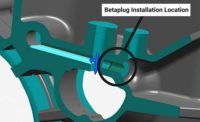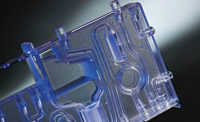Like many countries in the world, China views electric vehicles (EVs) as a means of sustainable transportation because of their low emissions and high energy efficiency. The Chinese government has invested substantially in EV research and development.
As a consequence, China has by far the biggest EV industry in the world. Between 2018 and 2023, Chinese automakers produced more than 13 million EVs and plug-in hybrid vehicles—more than any other country, according to market research firm Statista. That’s three times the number of EVs and hybrids produced in either Germany (4.4 million) or the U.S. (4.1 million).
In 2021 alone, China’s automotive industry produced 3.5 million units, some 1.6 times more than the industry produced in 2020. Revenues from the EV market reached approximately $102.2 billion for the year, the highest in the Asia-Pacific region.
For passenger EVs, the front-runner in China is SAIC Wuling Automobile Co., with sales of more than 424,350 units in 2021, surpassing both Tesla and BYD. A joint venture between SAIC Motor Corp., General Motors and Liuzhou Wuling Motors Co., SAIC Wuling Automobile makes commercial and consumer vehicles sold under the Wuling and Baojun brands. Based in Liuzhou, China, the joint venture has quickly become one of the largest manufacturers of minicars and microvans in China.
SAIC Wuling Automobile’s top supplier of axles and other drivetrain components is Liuzhou AAM Automobile Transmission System Co., a joint venture between Liuzhou Wuling Motors and American Tier 1 supplier American Axle & Manufacturing Inc.
In March 2020, Liuzhou AAM began making electric drives for the Baojun Kiwi, a four-seat city car with two doors and a hatch at the rear. When it was making axles for gas-powered vehicles, Liuzhou AAM used hydraulic presses. However, axles for EVs were a different animal.
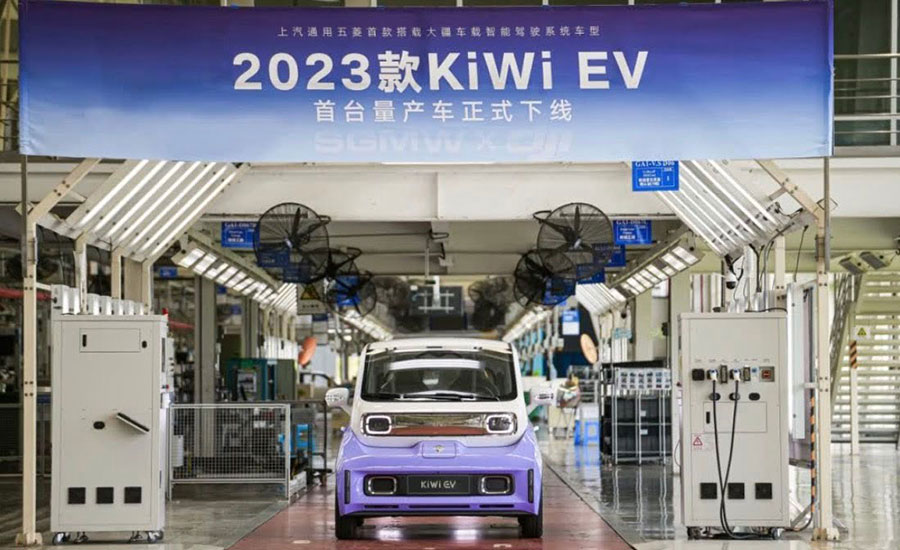
A joint venture between SAIC Motor Corp., General Motors and Liuzhou Wuling Motors Co., SAIC Wuling Automobile makes commercial and consumer vehicles sold under the Wuling and Baojun brands. Photo courtesy SAIC Wuling Automobile Co.
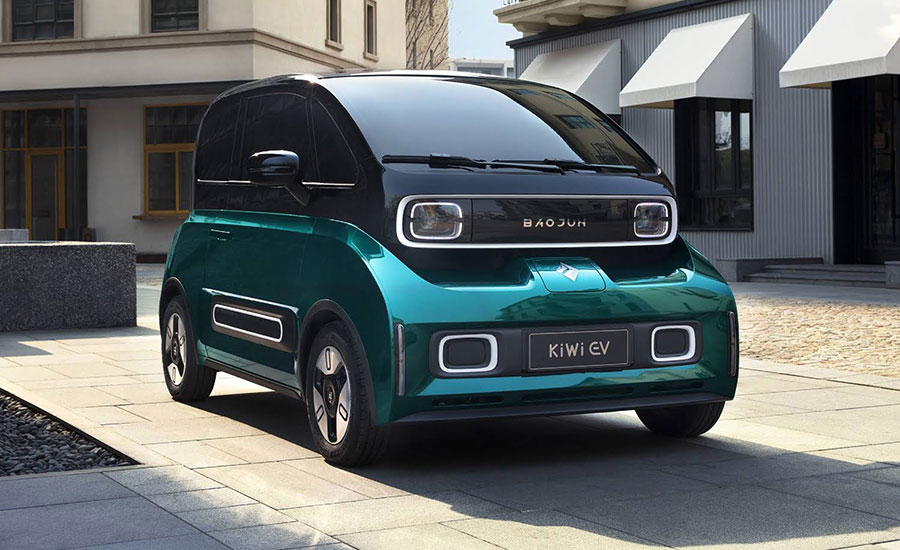
The Baojun Kiwi is among the best-selling EVs in China. Photo courtesy SAIC Wuling Automobile Co.
“[The hydraulic] machines could not provide real-time monitoring and precise press-fits,” says Chen Chuanliang, a senior process engineer at Liuzhou AAM. “Quality problems, such as inclined surfaces, shoveled edges and damaged parts caused by excessive pressure, tended to occur during the assembly process.”
Before joining Liuzhou AAM, Chen was responsible for the process development of reduction drives and rear axles at Liuzhou Wuling Motors. “Product problems caused by the old machines always led to the suspension of a production line, causing economic losses along the supply chain. What’s worse, if a potential quality problem emerged or abnormal sound was heard after vehicle assembly, complaints from customers would follow,” he adds.
Servo Presses Ensure Quality
To prevent such problems on the EV axle assembly line, Liuzhou AAM needed a press-fit system that provided precise control over force and displacement. “We were looking for an easy-to-use system that could control press-fit speed according to the pace of the production line and the demands of the workstation,” says Chen. “It also had to provide real-time feedback and adjust displacement and force parameters automatically, thereby reducing the amount of time engineers spent adjusting the press onsite.”
Electromechanical servo presses and monitoring systems from Kistler Instrument Corp. filled the bill. Specifically, Liuzhou AAM equipped its reduction-drive assembly line with Kistler’s NCFH and NCFN joining systems, while NCFE joining systems are used to assemble gears, accelerators, bearings, oil seals, half shafts, bushings and other products.
The NCFN is for applications requiring 5 to 300 kilonewtons of force. The NCFH is equipped with a hollow-shaft motor for highly dynamic processes and short cycle times. Its force output ranges from 1 to 60 kilonewtons. Both feature integrated force control and high velocity and measurement accuracy. And, both are equipped with active deflection compensation. The NCFE has an integrated strain-gauge force sensor and comes in four sizes ranging from 2 to 80 kilonewtons.
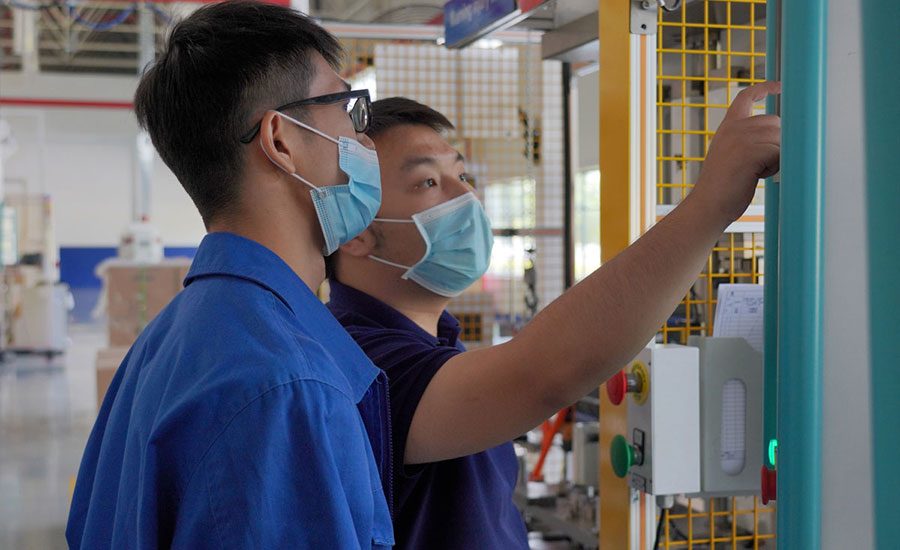
Engineer Li Liuyi helps to set up the maXYmos process monitoring system at Liuzhou AAM’s assembly plant. Photo courtesy Kistler Instrument Corp.
The maXYmos captures, plots and analyzes the XY curves of two variables in an assembly process, such as force and distance in a press-fitting operation. XY measurements of this kind can be used to monitor the quality of an individual manufacturing step, a series of steps, or an entire product. Combined with Kistler’s piezoelectric sensors, the system ensures robust and accurate measurements of process and quality data, even when ambient conditions are difficult, where installation space is limited, or if the forces are very small. An Ethernet TCP/IP network is used for transmitting measurement data, remote maintenance and channel cascading. Data can be exported in multiple formats, such as Q-DAS, XML, CSV and PDF. Optional equipment includes a display module with 10.4-inch color touch screen and front-facing USB port.
Thanks to the Kistler products, “the scrap rate of oil seal and bearing products has decreased a lot,” says Chen.
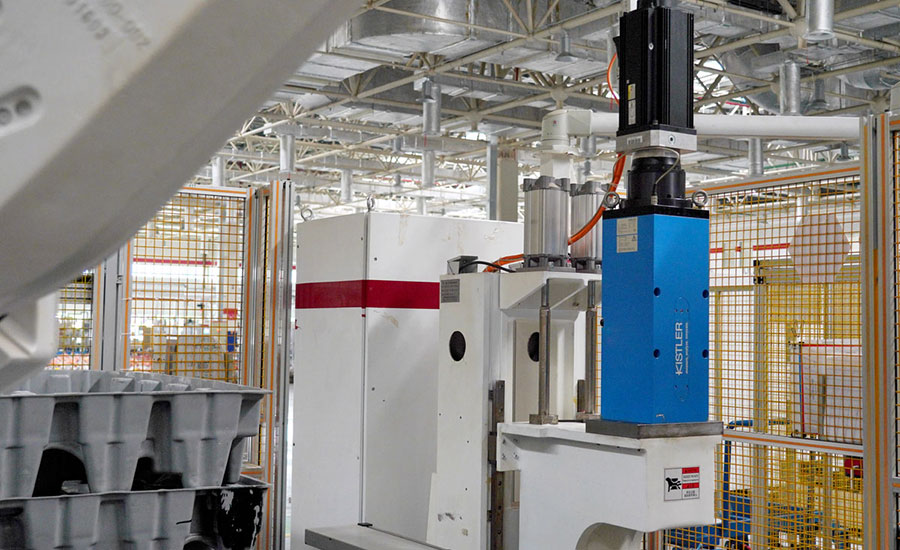
Servo presses have dramatically reduced the scrap rate for oil seal and bearing products. Photo courtesy Kistler Instrument Corp.
Compatibility and flexibility were key requirements for Liuzhou AAM. Highly automated assembly lines require perfect control of the pace of production. To increase efficiency and productivity, every press on the line must meet the technical requirements of a variety of assemblies.
Kistler’s joining modules meet those requirements. “An advantage of Kistler’s equipment is its excellent flexibility. From the perspective of a process engineer, this is a great convenience,” Chen says.
The equipment also features a uniform structure and compact design, which simplify integration into the company’s assembly lines.
For more information on servo press technology, visit www.kistler.com.
ASSEMBLY ONLINE
For more information on assembly presses, read these articles:
Get Objective for Vehicle Dynamics Testing
Servo Presses Improve Assembly of Diesel Engines
Process Monitoring Helps Molder Achieve Zero-Defect Production



